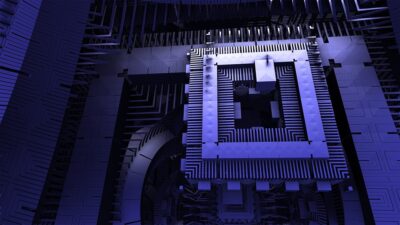As urban populations continue to swell, the demand for efficient, interconnected systems has never been more pressing. Amidst the surge of technological advancements, 5G emerges as a transformative force in the development of smart cities—urban areas that leverage technology and data to enhance the quality of life for residents, optimize resource management, and foster sustainable growth. Let’s explore how 5G technology serves as the backbone of these futuristic urban landscapes.
1. Unprecedented Speed and Connectivity
One of the most significant advantages of 5G technology is its ability to deliver exceptionally high data rates, potentially reaching up to 10 Gbps. This speed facilitates instantaneous communication between various sensors, devices, and platforms within a smart city framework. For instance, connected vehicles can receive real-time updates on traffic conditions, allowing for more efficient routing and enhanced safety. This immediacy is critical in emergency response scenarios, where every second matters.
2. Massive Device Connectivity
Smart cities rely heavily on the Internet of Things (IoT) to create an interconnected urban ecosystem. 5G technology can support up to one million devices per square kilometer, making it ideal for densely populated areas. This capability ensures that everything from streetlights to waste management systems to public transport can communicate seamlessly. For example, smart trash bins equipped with sensors can notify waste management teams when they need to be emptied, reducing operational costs and improving efficiency.
3. Enhanced Data Processing and Security
With 5G’s advanced capabilities comes the potential for sophisticated data analytics. Smart cities generate vast amounts of data that, when properly harnessed, can lead to improved urban planning and services. The ultra-low latency of 5G enhances the speed at which data can be processed and analyzed, enabling city officials to respond swiftly to challenges such as traffic congestion or resource allocation.
However, with great data comes great responsibility. As cities become increasingly connected, the need for robust cybersecurity measures grows. 5G networks can offer improved encryption protocols, ensuring that sensitive city data, from infrastructure to surveillance systems, is protected from cyber threats.
4. Facilitating Sustainable Urban Development
Sustainability is a key focus for modern urban planning, and 5G plays a crucial role in reducing the ecological footprint of city operations. Smart energy grids, powered by 5G, can optimize energy consumption by predicting demand and integrating renewable energy sources. Additionally, real-time monitoring systems can track air quality, traffic flow, and resource consumption, enabling cities to make informed decisions that promote environmental stewardship.
5. Empowering Citizens with Smart Services
Ultimately, the goal of a smart city is to improve the lives of its inhabitants. 5G enables various citizen-centric applications, from smart healthcare solutions, like telemedicine and remote monitoring, to smart public services, such as efficient public transportation systems and personalized city services. By fostering a community-focused approach to urban challenges, cities can enhance civic engagement and improve overall quality of life.
Conclusion
As we stand on the brink of a new urban era, the role of 5G in shaping smart cities cannot be overstated. With its unparalleled speed, connectivity, and potential for data analytics, 5G will enable urban areas to transform into efficient, sustainable, and citizen-friendly environments. However, realizing this vision requires collaborative efforts among governments, technology providers, and communities to ensure that the deployment of 5G infrastructure is equitable and responsible. The future of urban living is on the horizon, with 5G as its backbone, ready to support innovation and progress for generations to come.


